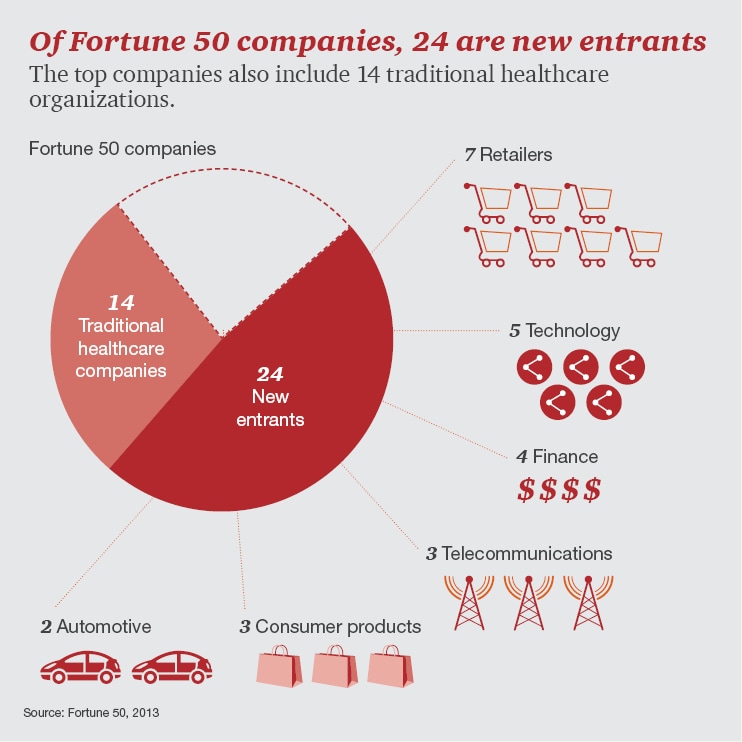The BIG Disruptor in Health Care Reform
According to an article by Susan Hall at FierceHealthIT.com, Savvy new players focused on consumer-oriented, technology-enabled innovation are expected to shake up the healthcare industry.
Innovative companies drawing from ideas that transformed the retail, technology and telecommunications sectors are poised to siphon off tens of billions of dollars from traditional healthcare’s $2.8 trillion in revenue, according to a new report from PricewaterhouseCoopers’s Health Research Institute. (read the entire article)
The cited PWC Report says that new entrants are nibbling at the edges of the traditional healthcare ecosystem, but they aren’t all startups. In fact, they include almost half of the Fortune 50 large corporations. There’s obviously a big enough opportunity attracting them, and it’s not “tens of billions” but more like hundreds of billions or trillions of dollars.
The list includes Apple, Archer Daniels Midland, AmerisourceBergen, AT&T, Berkshire Hathaway, Cardinal Health, CVS Caremark, General Electric, General Motors, Express Scripts, Ford, IBM, Johnson & Johnson, McKesson, MetLife, Microsoft, Pfizer, Target, UnitedHealth Group, Verizon, Walgreen, Wal-Mart, and WellPoint. Many other large companies are also getting into healthcare, including Dell, Google, and Intel.
I couldn’t help but weigh in and comment on the article with the following.
The BIG Disruptor:
New Incentives and a $3 trillion/year opportunity.
People still don’t realize just how disruptive the ACA is and why incumbent players spent and continue to spend so much on lobbying to protect their interests.
PAYMENT SYSTEM – Now that insurers can’t cherry-pick just the healthiest customers, cut off coverage when an illness becomes expensive, and must spend 80% of premiums on health care rather than overhead, they are finding new ways to protect their own bottom line. That starts with a focus on wellness programs and prevention but also includes low-cost policies with high deductibles that give consumers new incentives to comparison shop for the best value. To make such shopping even possible, the insurers are pressuring providers to make their once-secret charges more transparent up front.
DELIVERY SYSTEM – With the news media raising awareness of health care quality and cost issues, and consumers taking more responsibility for their own health & wellness and now more able to compare options such as retail clinics, home care, telehealth, and medical tourism; providers also have new reason to innovate. They see many functions and procedures associated with hospitals & doctors moving down-market to PAs, NPs, RNs, LVNs, Aides, Techs, and even consumers themselves.
NET RESULT – There’s more than 10s of billions of dollars at stake, much more. That’s because Americans currently spend $3 trillion/year on health care, which is twice as much as other nations, but we live sicker and die younger. According to the WHO, our average lifespan is not even ranked in the top 50 – it’s 51st behind Guam, so there’s LOTS of room for improvement – at least $1.5 trillion/year in my view. That’s an awfully BIG incentive.

